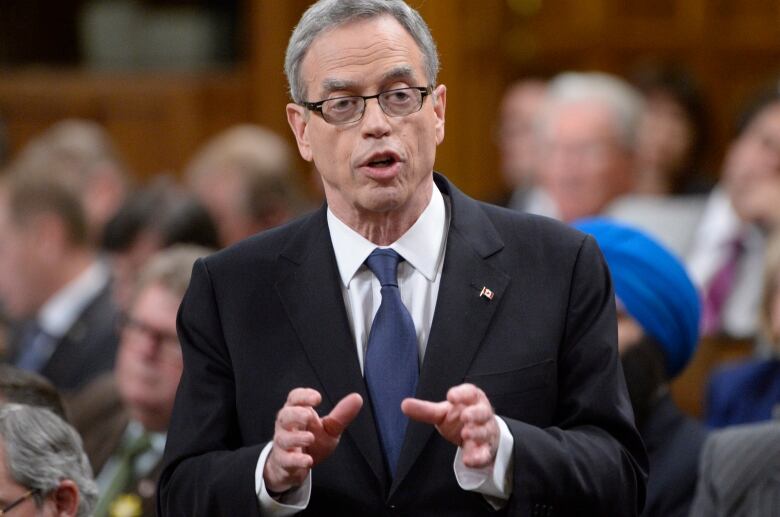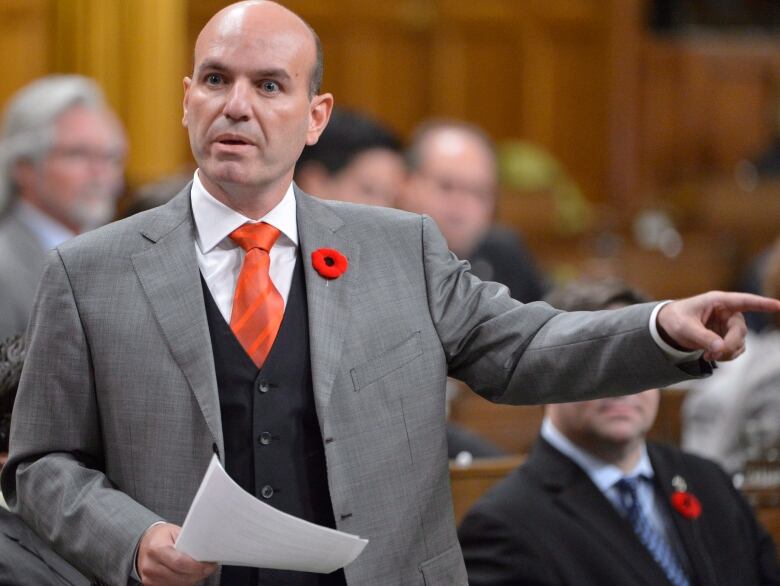'Typical' family in federal budget not so typical: critics
'Typical' family again makes appearance in federal budget, but its fortunes have changed since 2014

The middle-class income of a Canadian family of four, with both parents working, appears to have stalled, at least according to the "typical" example presented in last week's federal budget.
Henry and Cathy, raising their two kids Grace and Elizabeth, pull in $120,000 between them, says the example highlighted on page six of the main budget document no change from the income of the "typical" family in the 2014 budget.
In addition to getting no increase, the disparity in the spouses' incomes has worsened from last year, with one spouse making $48,000 less than the other though the large disparity allows them to take full advantage of income-splitting. In last year's example, the difference in their incomes was only $14,000.
Some economists also note that this family is hardly typical of the majority of Canadian families, who earn much less.
"If you look at the typical Canadian, the typical family that a Canadian lives in, then $120,000 that puts you in the upper 15 per cent of Canadian families," says Miles Corak, an economist at the University of Ottawa.
(Corak is a member of aneconomic advisory panel forthe Liberal party, and is affiliatedwith the C.D. Howe Institute, a business think-tank, and with theBroadbent Institute, which has links with the NDP.)
Clearly in upper tier
"It sort of tells you something implicitly about what their target group might be," Corak said. "Henry and Cathy are making well above the median household income, and are clearly in the upper tier."
Finance Canada has provided an example of a "typical" two-income family of four in each of the last four budgets, which officials say is based on internal taxation data. So it's possible to chart the families' changes in fortune through four years.

The Conservatives have changed their sample incomes to suit their political purposes.- NDP finance critic Nathan Cullen
But this year Henry and Cathy's family somehow missed out on any income increase, surviving on the same $120,000 as last year, an apparent affirmation that middle-class incomes have become stagnant, as critics and opposition parties claim.
Their incomes - $84,000 for him, $36,000 for her are also widely divergent, compared with the previous three years, where the difference rangedbetween $14,000 and $20,000, rather than $48,000 in 2015. And in all previous years, the woman was the biggest breadwinner. In the income-splitting year, the man suddenly earns the biggest income.
"So you can see in constructing that typical family, if you make a very large difference between their incomes, they're in different marginal tax brackets, so they're going to gain more" from income-splitting benefits, says Corak.
All about politics
Nathan Cullen, the NDP's finance critic, says the budget's family example is all about politics, not about fairly illustrating tax policy.
"The Conservatives' imaginary 'typical family' doesn't reflect the reality of Canadian families: they make almost twice as much as the real average Canadian family," Cullen said.

David Barnabe,spokesman for the Finance Department, says the exampleof tax savings presentedin the 2015 budget "is not an average. Rather, it is an illustrative example of potential savings or benefits for given segments of the Canadian population."
Illustrative only: Finance
"That said, the annual income level of the family of four example is based on the average family income reported by one- and two-earner couples with two children using T1 data collected by the Canada Revenue Agency and income growth forecasts based on the most recent average private-sector economic forecast."
"The average disparity in incomes between the two spouses are based on these family types.The high-earner was chosen to be a male for illustrative purposes only."
Barnabe added that the "typical'family examples given in the 2013 and 2014 budgets are not directly comparable to the 2015 example, and should not be used to interpret trends.
Corak said the budget should have provided more information about how income-splitting affects different types of Canadian families, not just the two-income, two-kid example provided.
"Ultimately what we should be expecting from a document like this, and which surely was done inside of Finance, is a full analysis of the incidence of these changes across the income distribution, and across family types," he said.
Follow @DeanBeeby on Twitter
Clarifications
- This story has been updated to note Miles Corak's work for the Liberal party, C.D. Howe Institute and Broadbent Institute.Apr 28, 2015 2:01 PM ET












_(720p).jpg)


 OFFICIAL HD MUSIC VIDEO.jpg)
.jpg)



























































































